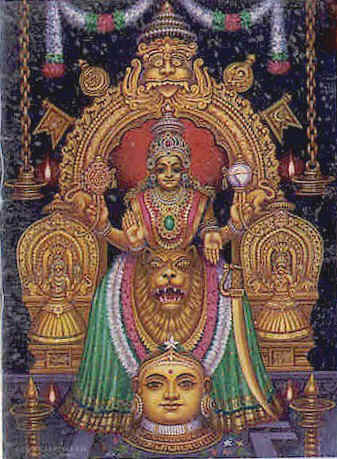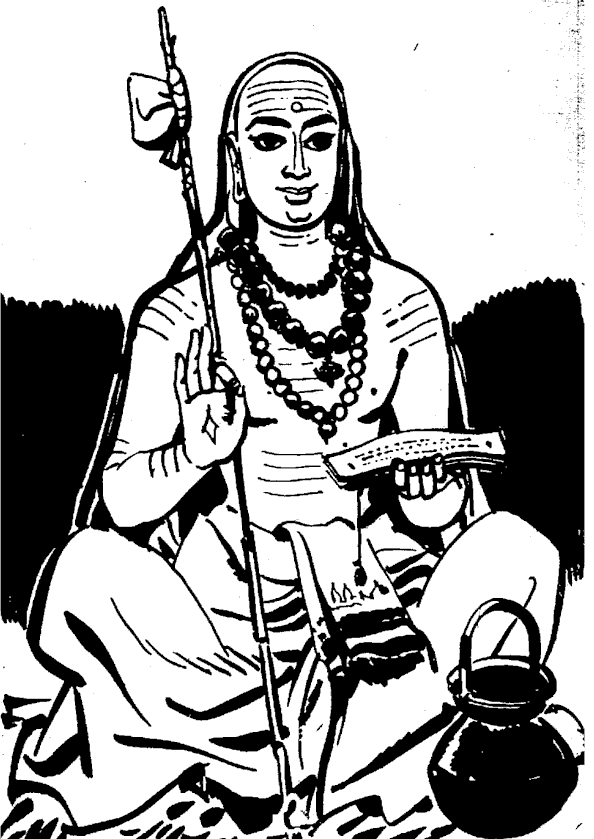Location : In Darasuram Near Kumbakonam, Tamil Nadu
Deity Worshipped : Airavateshwara -Lord Shiva
Built By : King Rajaraja
Completed By : Pandya Rulers
The temple was built by King Rajaraja II (1146-1173 AD) in the late Chola period. In the middle of the 14th century additions were made to the existing temple, and finally the Pandya rulers completed the temple.
About The Temple
The main structure is an elongated rectangle of little height, rising into a pyramidal tower at the western end. Round about are many other buildings, all within the same enclosure - a characteristic of the Dravidian style to follow. The pillars are typical of those of this period with scalloped capitals and bases and brackets with a Cyma Recta curve over the capital. The plastic ornamentation of the tower though good is rather clustered and produces a feeling of confusion. The porch is in the form of a wheeled chariot drawn by elephants.
The Exquisitely Made Figurines
Entrance is through a large Gopura (also spelt as Gopuram) gateway, 1m below ground level, in the main wall, which is topped with small reclining Bull figures. Inside the main building is set in a spacious courtyard. Next to the inner sanctuary, fronted by an open porch, the steps of the closed Mandapam feature elegant curled balustrades decorated with Elephants and 'Makaras' (mythical crocodiles with floriated tails). At the corners, rearing horses and wheels make the whole into a chariot. Elsewhere, clever sculptural puns include the head of an elephant merging with that of a bull.
Fine Chola black basalt images in wall niches in the Mandapam and the inner shrine include Nagaraja, the Snake-King, with a hood of Cobras, and 'Dakshinamurti', the "south-facing" Lord Shiva as teacher, expounding under a banyan tree. One rare image shows Lord Shiva as "Sharabha" (partly man, beast and bird) destroying the man-lion incarnation of Lord Vishnu, Lord Narasimha - indicative of the animosity between the Shaivite and Vaishnavite cults.
Sharabha, in his own separate small Mandapam, is approached by a flight of steps. Fanged 'Dvarpala' (door guardians) in 'Raudra' (furious) mood flank the shrine entrance. Each possesses a club, their four hands in an attitude denoting threat (tarjani) with Lord Shiva's trident, and the 'Trishula', wound into their hair.
Outside, a unique series of somewhat gruesome panels, hard to see without climbing on to the base, form a band along the top of the basement of the closed Mandapam and the sanctum sanctorum. They illustrate scenes from Sekkilar's Periya Purana, one of the great works of Tamil literature.
The poem tells the stories of the Tamil Shaivite saints, the "Nayanmars", and was commissioned by King Kulottunga II, after the poet criticized him for a preoccupation with erotic, albeit religious, literature. Sekkilar is said to have composed it in the Raja Sabha at Chidambaram and when it was completed the king sat every day for a year to hear him recite it.
Most enchanting, though, are the musical notes that rise from the tread stones inside the Nandi enclosure in front of the temple-they are melodious testimony to the superb engineering skills of master craftsmen of a bygone era.
Thanjavur has road links to all major cities. Connected by rail with Trichy, Madurai, Nagore, and Madras directly. The nearest airport, Tiruchirapalli, is 58 kms.
Tourists can unpack at the various hotels available in Thanjavur.


